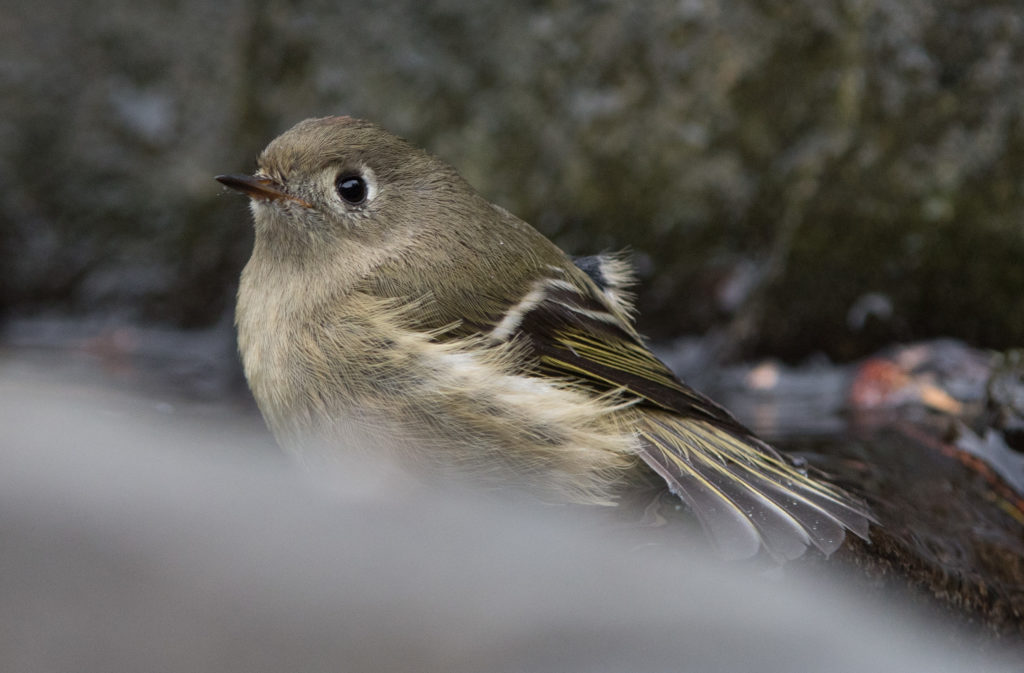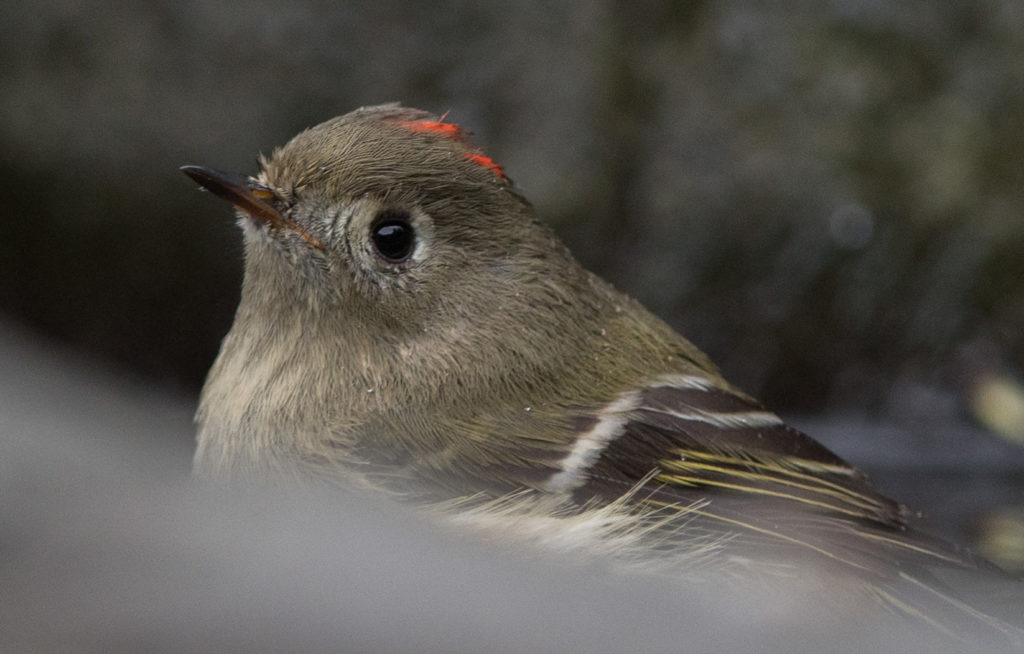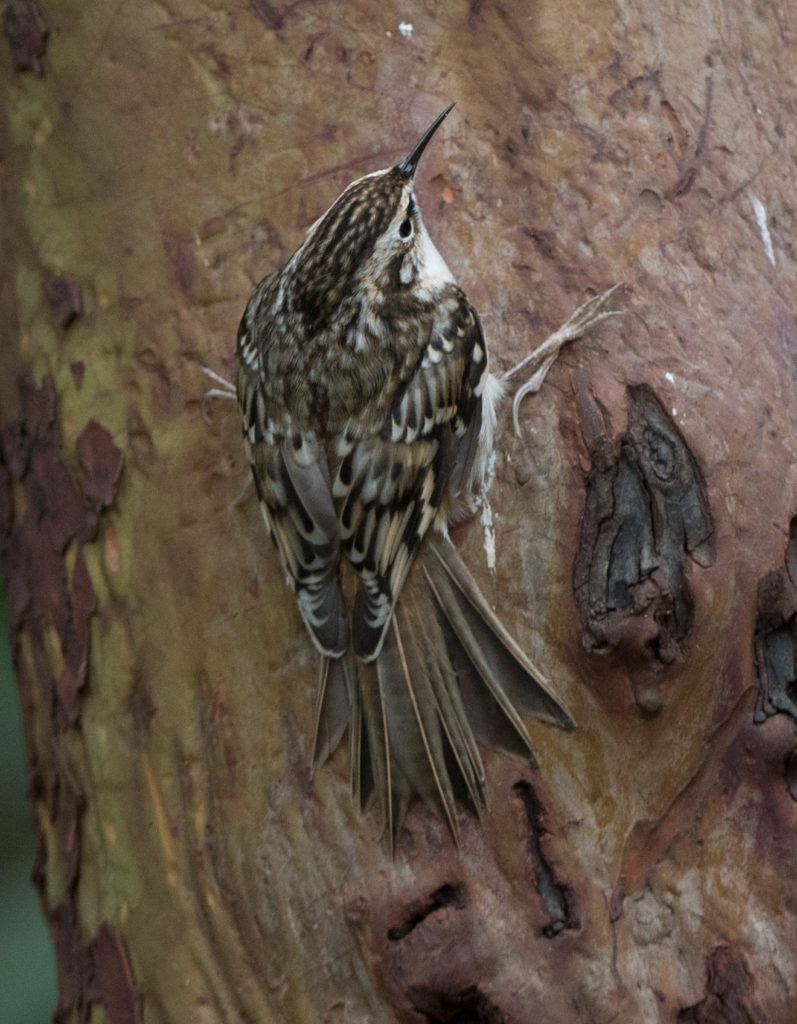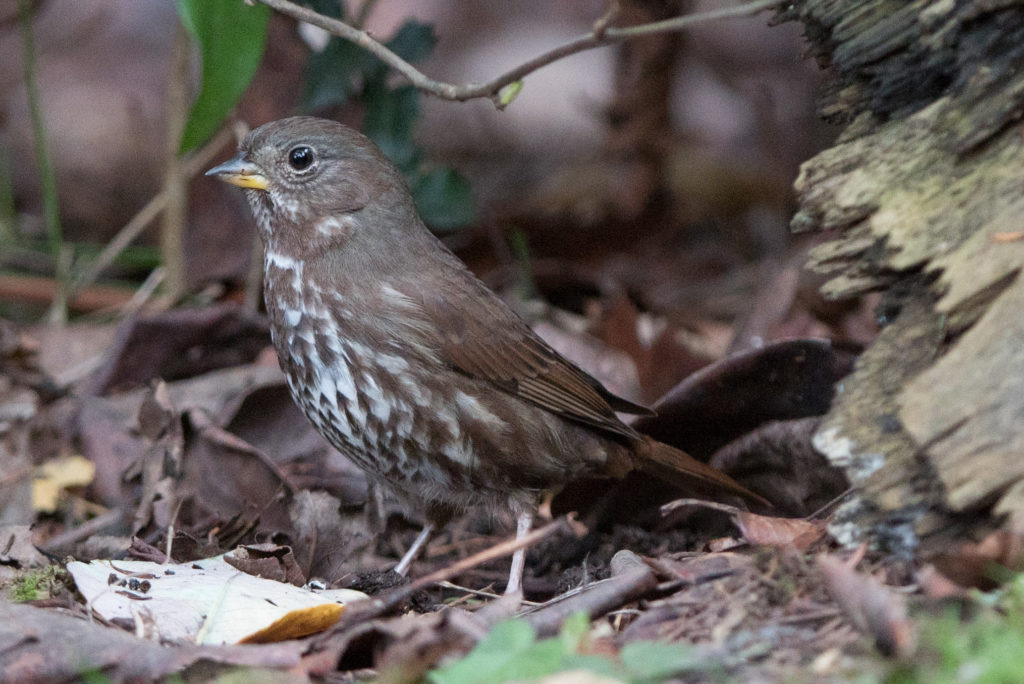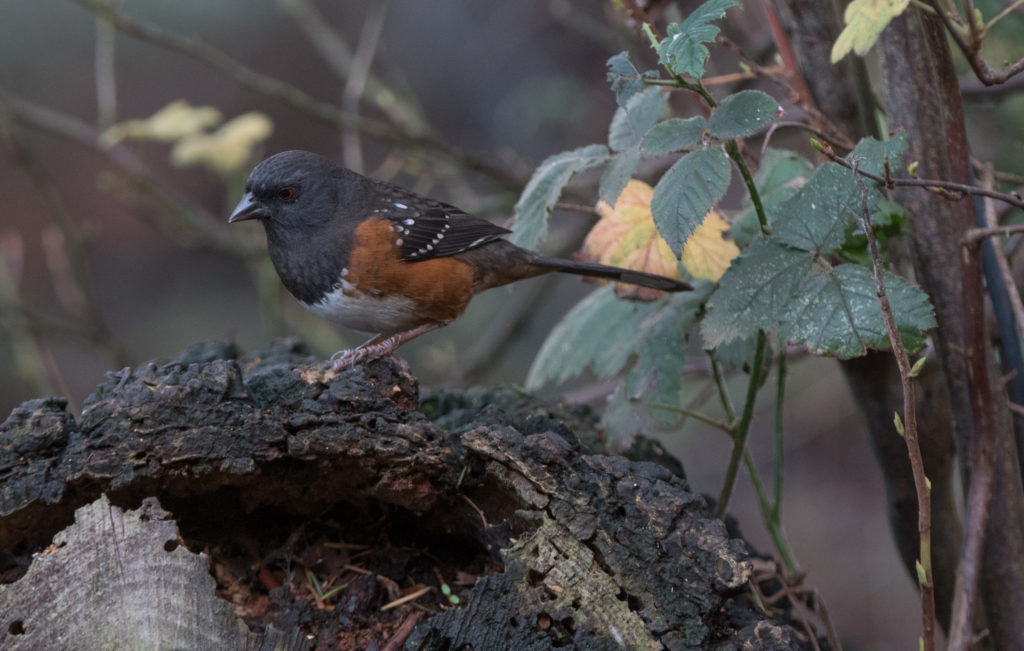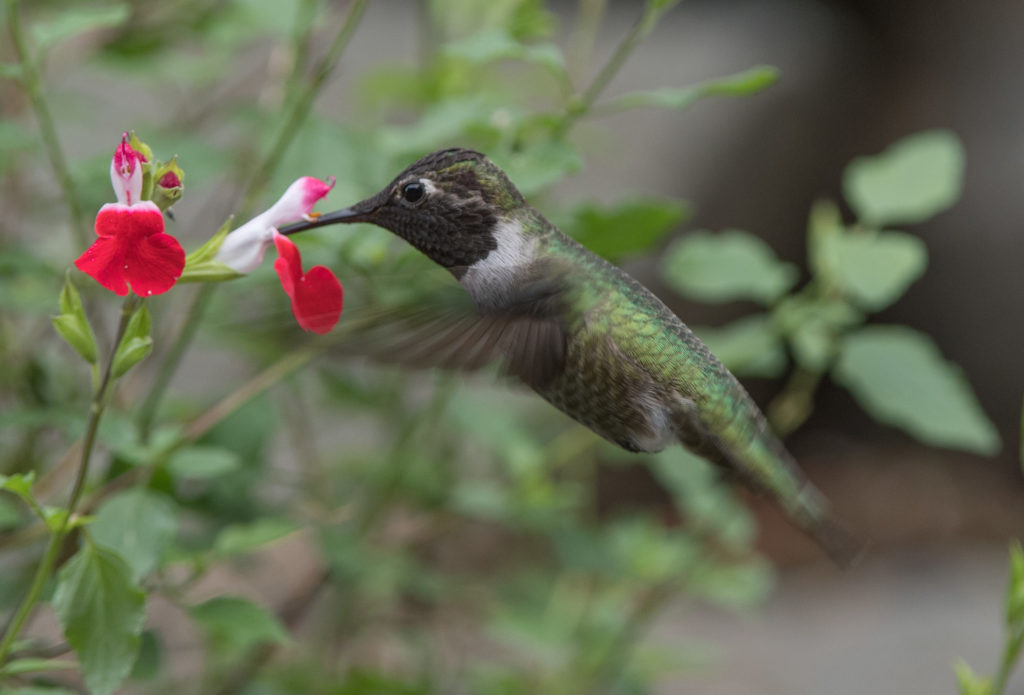Dribbling out a few more yard birds, just in time for Christmas! We’ve now experienced that shortest day of the year and photography will get nothing but better over the next 8-9 months. I’ve been having to photograph birds using a relatively high ISO which results in photos with less detail and more graininess, but as the light increases that obstacle is reduced. But for the next month or so we’ll all be having to deal with lower quality photographs.
The first two photographs below are of a male Ruby-crowned kinglet. The ruby crown, found only on the male, can be quite challenging to see in the field. Photographs, as in this case, can sometimes help me sort the males from the females but in many cases I just have to leave my photos unlabeled as to sex. These photos are of the same bird and from very nearly the same angle.
In the first photo there’s no trace of a ruby crown, but as you can see in the second photo, the ruby crown is showing and the bird can be identified as a male. So had I not gotten the additional photo showing the color I wouldn’t be able to be sure as to the sex of the bird.
I might add that the kinglet can raise and lower the crown, and it will often raise the crown when it is alarmed. It also tends to reveal the crown when it is bathing and gets its head wet.
Here’s another small bird that’s one of my favorites but can be difficult to photograph. It’s a Brown creeper, usually found moving UP one of the main branches of a tree. (The bird with similar feeding habits is the Red-breasted nuthatch, which is usually observed moving DOWN a main tree trunk.) Note the slender, curved bill used for extracting insects from cracks between the bark and the huge feet which allow the bird a secure grip. And the tail feathers, like those of woodpeckers, are stiff and used to brace the bird against the side of the tree, as pictured here. The bird is extremely well camouflaged and would be difficult to see if it weren’t so active.
We usually have one of these Fox sparrows in the yard each winter. A novice birder can have difficulty between identification of the Fox sparrow, the Song sparrow and the Golden-crowned sparrow, all here at this time of year. Both the Song sparrow and the Fox sparrow have breast stripes while the breast of the Golden-crowned sparrow is clear. The Song sparrow has a strong facial pattern and the Fox sparrow has a plain face. The color of a Fox sparrows breast stripes always reminds me of the color of a cup of hot chocolate.
We have least three Spotted towhees in the yard this winter. This one is probably a male as evidenced by its dark black feathers and the strong rust color of its sides.
Until our recent snows, we still had one or two species of salvia blooming in the yard. They are great plants for attracting hummingbirds and yet fading into the background for photography. I photographed this male Anna’s hummingbird feeding on the salvia in late November. The male Anna’s is still with us and defending a feeder as of Christmas!

